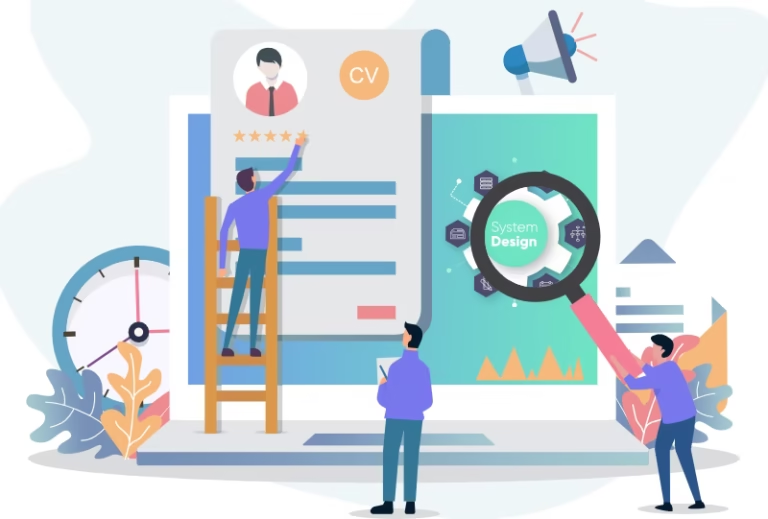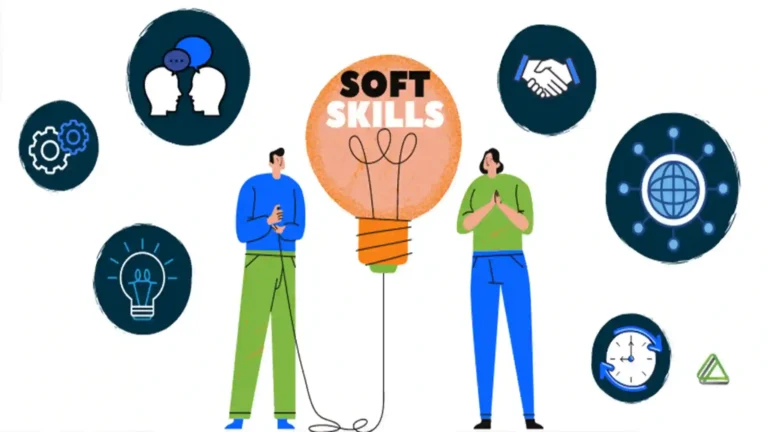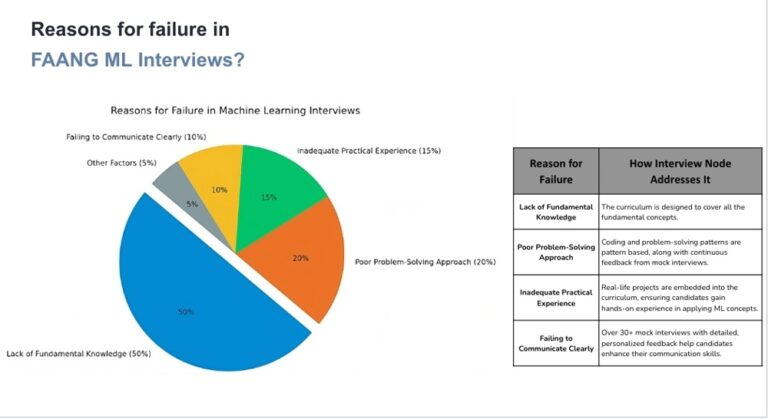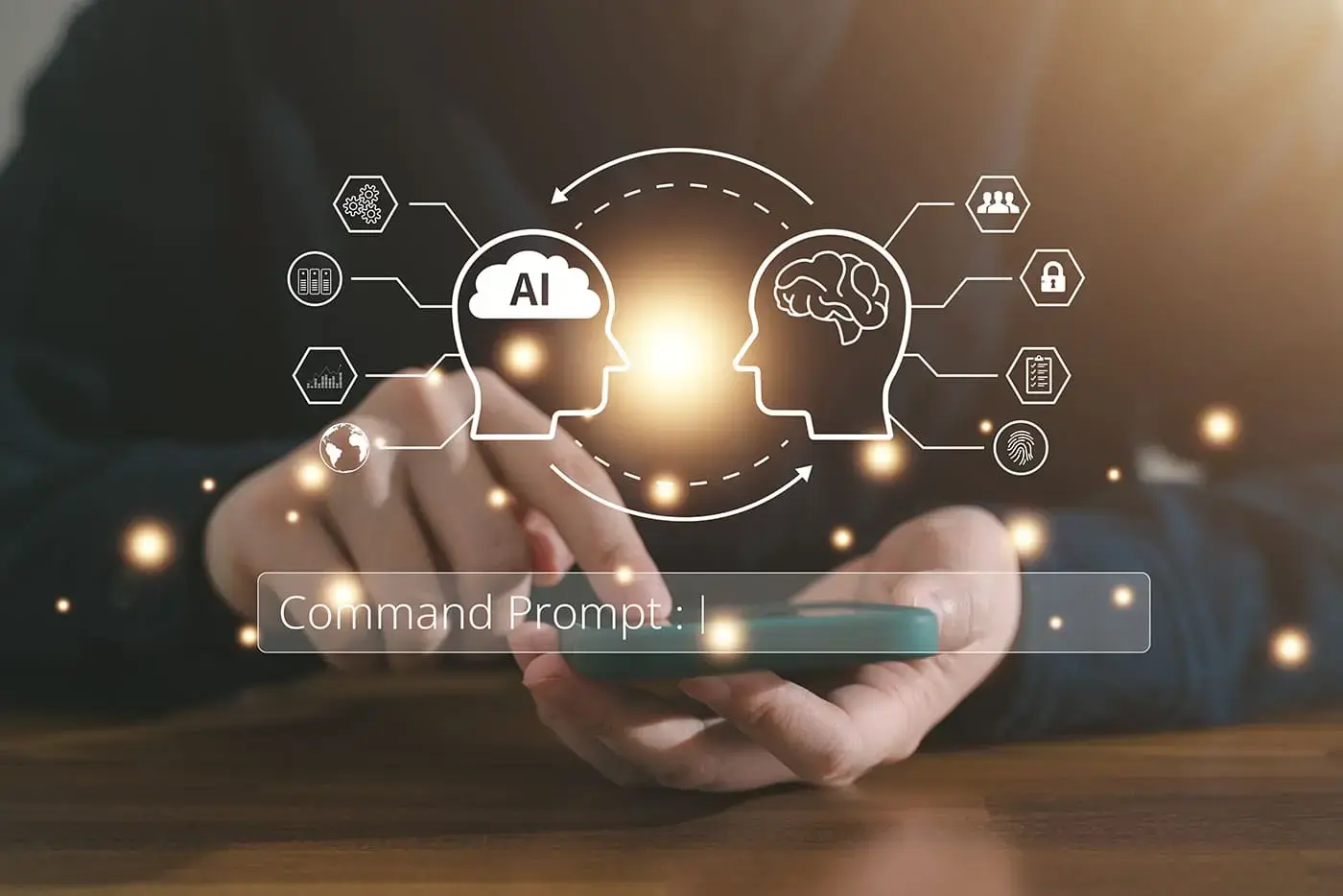Introduction
Purpose of the
Blog: Machine learning (ML) system design has become an integral part of technical interviews
at top tech companies. As businesses increasingly rely on machine learning models to drive decisions and
automation, the ability to design robust, scalable, and efficient ML systems is a highly sought-after skill.
This blog aims to equip software engineers with the essential ML system design concepts they need to succeed in these interviews.
Target
Audience: This blog is tailored for software engineers in the U.S. who are preparing for
machine learning interviews at leading tech companies such as Meta, Google, Microsoft, Apple, OpenAI, and
Tesla. Whether you're an experienced engineer looking to transition into ML roles or someone preparing for
your first ML system design interview, this guide will provide valuable insights.
Importance of System
Design: ML system design is not just about choosing the right algorithm or model; it’s about
understanding the end-to-end process of how data is collected, processed, modeled, and deployed in a
production environment. Interviewers use these questions to assess not only your technical skills but also
your ability to think critically about system architecture, scalability, and maintainability. Mastering
these concepts is crucial to standing out in interviews and securing a role at a leading tech
company.
Understanding
Machine Learning System Design
Definition: Machine Learning
System Design refers to the process of
architecting and developing systems that can efficiently handle data, build models, and deploy those models
into production environments. It encompasses the end-to-end workflow, from data collection to model serving,
ensuring that the ML system is scalable, reliable, and capable of delivering accurate predictions in
real-world scenarios.
Difference Between
ML System Design and General System Design: While general system design focuses on creating
scalable, efficient, and maintainable software systems, ML system design introduces additional complexities.
These include the need for robust data pipelines, considerations around model training and inference, and
dealing with uncertainties like data drift. In ML systems, you’re not only designing software but also
integrating statistical models that need constant tuning and monitoring. The interaction between these
models and the system’s architecture presents unique challenges that are critical in ML-focused
interviews.
Why It’s Important
in Interviews: Top companies like Meta, Google, and OpenAI use ML system design questions to
evaluate a candidate's holistic understanding of machine learning in production environments. These
questions test your ability to design systems that can handle large volumes of data, maintain model accuracy
over time, and scale efficiently as the user base grows. A strong grasp of ML system design shows that you
can think beyond algorithms and understand how to implement machine learning solutions that work at scale in
real-world applications.
Key ML System
Design Concepts
Data Pipeline
Design
Data
Collection: Data is the backbone of any machine learning system, and how it's collected
can significantly impact the model's performance. In an ML system design interview, you may be asked
to design a pipeline that efficiently gathers data from various sources. For example, a company like
Google might inquire about your approach to collecting user interaction data from multiple services,
ensuring data integrity, and handling different data formats.
Best
Practices:
Use
distributed data collection methods for scalability.
Implement data validation checks to maintain data quality.
Consider
privacy and security implications, especially when dealing with user data.
Data
Preprocessing: Once data is collected, it needs to be preprocessed before feeding it
into a model. Data preprocessing can include tasks such as data cleaning, normalization, and
transformation. In an interview, you may be asked to explain how you would handle missing data,
remove outliers, or normalize features in a large-scale system like Meta’s social media
platform.
Best
Practices:
Automate
preprocessing steps to ensure consistency.
Use
scalable tools like Apache Spark for large datasets.
Apply
techniques like one-hot encoding, feature scaling, and data augmentation where
necessary.
Feature
Engineering: Feature engineering involves selecting and transforming variables
(features) to improve the performance of a machine learning model. It is a critical step, as the
right features can significantly enhance a model’s accuracy. In an ML interview, you might be asked
to design a feature engineering pipeline for a recommendation system, like those used by Netflix or
Amazon.
Best
Practices:
Use
domain knowledge to create meaningful features.
Regularly update features based on new data and model
performance.
Consider
feature selection methods like Lasso or decision trees to identify the most
impactful features.
Model Selection and
Architecture
Choosing the
Right Model: Selecting the appropriate machine learning model is crucial, and it
depends on the problem at hand. For instance, in an interview with Tesla, you might be asked to
choose a model for autonomous driving, balancing between accuracy and computational
efficiency.
Considerations:
Problem
type (classification, regression, clustering, etc.)
Data
size and quality.
Computational resources available.
Scalability: ML systems must be designed to scale as the amount of
data or number of users grows. For example, in a Microsoft interview, you might need to design a
system that scales to handle millions of users performing real-time searches.
Best
Practices:
Design
models that can be parallelized across multiple machines.
Use
cloud-based solutions like AWS Sagemaker or Google AI Platform for scaling.
Implement load balancing to distribute computational workloads.
Real-time vs.
Batch Processing: Deciding between real-time and batch processing is another critical
aspect of ML system design. For instance, Apple might ask you to design a real-time fraud detection
system for Apple Pay, where latency is a key concern.
Considerations:
Real-time processing is essential for applications requiring immediate
responses, such as fraud detection or personalized recommendations.
Batch
processing is more suitable for tasks like periodic model training or processing
large datasets overnight.
Model Training and
Optimization
Training
Pipelines: Designing an efficient and scalable model training pipeline is essential.
You might be asked to design a training pipeline for a large language model at OpenAI, considering
factors like data sharding, distributed training, and GPU utilization.
Best
Practices:
Use
frameworks like TensorFlow or PyTorch that support distributed training.
Optimize
data input pipelines to avoid bottlenecks.
Implement checkpointing to save intermediate training states.
Hyperparameter
Tuning: Tuning hyperparameters can greatly impact a model’s performance. In an
interview scenario, you might be asked how you would optimize a model’s hyperparameters for a
high-traffic application like Google Search.
Techniques:
Grid
search and random search are standard approaches.
Bayesian
optimization can be more efficient for complex models.
Consider
using automated tools like Hyperopt or Optuna for large-scale hyperparameter
tuning.
Model
Versioning
and Experimentation: Keeping track of different model versions and experiments is
crucial in a production environment. You might be asked to describe how you would manage model
versions in a CI/CD pipeline for a product like Microsoft Azure’s AI services.
Best
Practices:
Use
tools like MLflow or DVC to track experiments and version models.
Implement A/B testing to compare different model versions.
Maintain
a centralized model registry for easy access and deployment.
Model Deployment and
Serving
Deployment
Strategies: Deploying models into production requires careful planning to avoid
disruptions. You may be asked to discuss deployment strategies like canary releases or blue-green
deployments in a Meta interview scenario.
Best
Practices:
Use
containerization tools like Docker to package models.
Implement canary releases to gradually roll out updates and monitor
performance.
Automate
deployment with CI/CD pipelines to ensure consistent releases.
Latency and
Throughput: Ensuring low-latency and high-throughput is crucial for systems that serve
machine learning models in real-time, such as recommendation engines or autonomous vehicles. In an
Apple interview, you might be asked how you would optimize a model serving system for low latency in
Siri.
Best
Practices:
Use
model optimization techniques like quantization or pruning to reduce inference
time.
Leverage
edge computing for latency-sensitive applications.
Monitor
system performance in real-time to identify and resolve bottlenecks.
Monitoring and
Maintenance: Continuous monitoring is essential to ensure that deployed models perform
as expected. In a Tesla interview, you might be asked to design a monitoring system for an
autonomous driving model to detect anomalies and trigger retraining.
Best
Practices:
Implement real-time logging and alerting systems to monitor model
performance.
Use
tools like Prometheus or Grafana for monitoring and visualization.
Schedule
regular model evaluations to detect performance degradation.
Handling Data Drift
and Model Decay
Concept
Drift: Over time, the underlying data distribution may change, leading to a phenomenon
known as concept drift. For instance, a Tesla interview might involve designing a system that can
detect and respond to changes in driving behavior data due to new regulations or road
conditions.
Best
Practices:
Implement statistical methods to detect concept drift, such as
monitoring prediction error rates over time.
Use
retraining strategies to update models in response to detected drift.
Consider
developing ensemble models that can adapt to changing data distributions.
Automated
Retraining: Automating the retraining process is crucial for maintaining model accuracy
in dynamic environments. In an OpenAI interview, you might be asked how you would implement
automated retraining for a chatbot model that needs to stay updated with current language
trends.
Best
Practices:
Schedule
periodic retraining based on new data or performance metrics.
Use
pipelines that automatically trigger retraining when concept drift is
detected.
Incorporate active learning techniques to prioritize the most
informative data for retraining.
Real-world ML
System Design Interview Questions from Top Companies
When interviewing for a
machine learning role at top companies like Meta, Google, or Tesla, you can expect questions that test your
ability to design scalable, efficient, and robust ML systems. Below are some actual questions that have been
asked in interviews, along with an analysis of what the interviewers are looking for and tips on how to
approach these challenges.
Meta: Design a
Content Recommendation System
Question:"How would you design a
content recommendation system for Facebook?
Consider scalability, personalization, and real-time processing in your design."
Analysis:This question is
typical of Meta, where the focus is on systems that
need to scale to billions of users while delivering personalized content. The interviewer is looking for
your ability to handle large datasets, provide real-time recommendations, and ensure the system can scale
horizontally.
Key Points to
Address:
Data Collection
and Preprocessing: Discuss how you would collect user interaction data (likes, shares,
clicks) and preprocess it to remove noise and irrelevant information.
Feature
Engineering: Explain how you would engineer features that capture user preferences,
content attributes, and temporal patterns.
Model
Selection: Consider using collaborative filtering, content-based filtering, or hybrid
models. Explain your choice based on the system's requirements.
Scalability: Discuss distributed computing frameworks like Apache
Spark for batch processing and Apache Kafka for real-time data streams.
Personalization: Detail how you would implement user profiling and
dynamic updating of recommendations as new data comes in.
Real-time
Processing: Explain how you would handle real-time updates, possibly using online
learning algorithms or approximate nearest neighbor search for quick retrieval.
Tips:
Focus on how you would
handle the sheer scale of Meta's user base.
Emphasize the
importance
of latency and user experience in your design.
Google: Design a
Real-time Traffic Prediction System
Question:"Design a real-time
traffic prediction system for Google Maps. How
would you ensure the system is accurate and scalable?"
Analysis:Google is known for its
large-scale, real-time systems. This
question evaluates your ability to design a system that can process large amounts of data in real-time and
produce accurate predictions, all while ensuring scalability.
Key Points to
Address:
Data
Sources: Describe how you would integrate various data sources, such as GPS data,
historical traffic patterns, and user-reported incidents.
Model
Selection: Discuss the choice between classical time-series models (like ARIMA) and
deep learning models (like LSTMs or Transformers) for predicting traffic flow.
Real-time Data
Processing: Explain how you would use stream processing frameworks like Apache Flink or
Google Dataflow to handle incoming data.
Scalability: Consider cloud-based solutions and distributed computing
to manage large datasets and ensure quick response times.
Accuracy: Mention how you would deal with noisy data and ensure the
model’s accuracy by incorporating feedback loops and periodic retraining.
Tips:
Highlight your
understanding of real-time data processing.
Discuss trade-offs
between model complexity and prediction latency.
Microsoft: Design a
Speech Recognition System
Question:"How would you design a
scalable speech recognition system for
Microsoft Teams?"
Analysis:This question assesses
your ability to design an ML system that can
handle real-time audio data and convert it into text accurately. Microsoft is interested in how you manage
latency, accuracy, and scalability in such a system.
Key Points to
Address:
Data
Pipeline: Describe how you would preprocess audio data, including noise reduction,
feature extraction (like MFCCs), and segmentation.
Model
Selection: Discuss the use of deep learning models, such as RNNs, LSTMs, or Transformer
models, for speech recognition tasks.
Scalability: Explain how you would scale the system to support
millions of users, perhaps by using microservices and cloud computing.
Latency: Consider strategies to minimize latency, such as on-device
processing or edge computing.
Post-processing: Talk about how you would handle language models for
improving the accuracy of recognized text and integrating contextual understanding.
Tips:
Focus on how to ensure
low latency without sacrificing accuracy.
Discuss the trade-offs
between cloud-based processing and edge computing.
Apple: Design an
Anomaly Detection System for Apple Pay
Question:"How would you design
an anomaly detection system for Apple Pay to
detect fraudulent transactions in real-time?"
Analysis:Apple Pay requires high
security and reliability. This question
tests your ability to design a system that can detect anomalies (potential fraud) quickly and accurately,
with minimal false positives.
Key Points to
Address:
Data
Sources: Explain how you would integrate transaction data, user behavior, and external
threat intelligence.
Feature
Engineering: Discuss which features (e.g., transaction amount, location, time of day)
would be most indicative of fraud.
Model
Selection: Consider using a combination of supervised learning models (e.g., logistic
regression, decision trees) and unsupervised learning models (e.g., clustering algorithms,
autoencoders) for anomaly detection.
Real-time
Processing: Describe how you would implement real-time detection, possibly using stream
processing frameworks like Apache Kafka.
Scalability and
Latency: Ensure the system can handle the scale of Apple Pay’s transaction volume while
maintaining low latency.
Tips:
Emphasize the
importance
of minimizing false positives and negatives.
Discuss how you would
adapt the system as new fraud patterns emerge.
OpenAI: Design a
Chatbot System Capable of Handling Ambiguous Queries
Question:"Design a chatbot
system for customer support that can handle
ambiguous or incomplete queries."
Analysis:This question from
OpenAI focuses on your ability to create a system
that can understand and respond to vague or incomplete user queries, which is crucial for effective customer
support.
Key Points to
Address:
NLP
Pipeline: Describe how you would preprocess text data, including tokenization,
stemming, and stop-word removal.
Model
Selection: Consider using transformer-based models like GPT or BERT for understanding
context and generating responses.
Handling
Ambiguity: Explain how you would handle ambiguous queries, possibly by implementing a
clarification loop where the chatbot asks follow-up questions.
Training and
Optimization: Discuss how you would fine-tune the model on customer support data to
improve its understanding of common queries and responses.
Continuous
Learning: Implement a feedback loop where the system learns from user interactions to
improve over time.
Tips:
Focus on the system’s
ability to handle edge cases and ambiguous queries.
Discuss strategies for
ensuring the chatbot remains accurate and helpful over time.
Tesla: Design an
Autonomous Vehicle Data Pipeline
Question:"How would you design a
data pipeline for processing and analyzing
data from Tesla’s fleet of autonomous vehicles?"
Analysis:This question tests
your ability to design a data pipeline that can
handle vast amounts of data generated by autonomous vehicles, including video, sensor, and telemetry
data.
Key Points to
Address:
Data
Ingestion: Describe how you would collect and preprocess data from various sensors
(e.g., LiDAR, cameras, radar).
Real-time
Processing: Explain how you would handle real-time data processing for tasks like
obstacle detection and decision making, possibly using edge computing.
Data Storage
and
Management: Consider the storage solutions for vast amounts of data and how you would
organize it for efficient retrieval and analysis.
Scalability: Discuss how you would scale the pipeline to support
Tesla’s entire fleet and ensure low latency in data processing.
Model
Integration: Talk about how you would integrate machine learning models into the
pipeline for tasks like object detection, lane detection, and path planning.
Tips:
Emphasize the
importance
of real-time processing and low-latency data flows.
Discuss the challenges
of scaling the system to support a large fleet of autonomous vehicles.
Discussion: Common
Patterns and Expectations
Scalability: All these questions require a strong understanding of
how to scale machine learning systems to handle large amounts of data and users.
Real-time
Processing: Real-time data processing is a recurring theme, emphasizing the importance
of low-latency systems.
Model
Selection: Choosing the right model for the task is critical, and you should be
prepared to justify your choices based on the specific requirements of the system.
Data
Handling: Efficient data collection, preprocessing, and storage are crucial components
that underpin successful ML system design.
Common Pitfalls
in ML System Design Interviews
Even the most technically
skilled candidates can stumble in ML system design interviews if they overlook certain key aspects. Below
are some of the most common pitfalls that candidates encounter, along with tips on how to avoid them.
Over-engineering:
The Danger of Making Systems More Complex Than Necessary
Pitfall:A
common mistake is to over-engineer solutions by adding unnecessary complexity. Candidates may feel pressured
to demonstrate their technical prowess by incorporating every advanced technique they know, which can lead
to a system that is difficult to maintain, scale, or even understand.
Why It
Happens:Candidates often want to impress interviewers by showcasing their deep technical
knowledge. However, this can backfire if the solution becomes overly complex or unwieldy.
How to Avoid
It:
Focus on
Simplicity: Start with a basic, functional design and only add complexity where it
provides a clear benefit. Remember, the goal is to design a system that is both effective and
maintainable.
Prioritize
Requirements: Understand the core requirements of the system and focus on meeting those
first. Additional features or optimizations can be discussed as potential future
improvements.
Communicate
Clearly: Explain your design choices to the interviewer and be prepared to justify
them. This helps ensure that any complexity you add is both understood and deemed necessary.
Ignoring Edge Cases:
Importance of Handling Rare but Critical Scenarios
Pitfall:Another frequent mistake
is to overlook edge cases, which are rare
but critical scenarios that can cause the system to fail if not properly handled. Ignoring these can lead to
systems that work well under normal conditions but fail under exceptional circumstances.
Why It
Happens:In the pressure of an interview, candidates may focus on the "happy path"—the scenario
where everything works as expected—and neglect to consider what happens when things go wrong.
How to Avoid
It:
Think
Holistically: During the design process, regularly ask yourself, "What could go wrong?"
Consider edge cases such as network failures, corrupted data, or unusual user behavior.
Use
Examples: When discussing your design, explicitly mention how your system handles
potential edge cases. This shows the interviewer that you’re thinking critically about reliability
and robustness.
Practice: Familiarize yourself with common edge cases in ML systems
by reviewing real-world failures and considering how they could have been prevented.
Lack of
Communication: The Importance of Explaining Your Thought Process
Pitfall:Many candidates fail to
clearly articulate their thought process
during the interview. This can leave the interviewer unsure of how you arrived at your design decisions,
which can negatively impact their assessment of your abilities.
Why It
Happens:In the heat of the moment, candidates might focus on solving the problem quickly,
neglecting to communicate their reasoning and approach.
How to Avoid
It:
Think
Aloud: As you work through the problem, verbalize your thoughts. Explain what you’re
considering, why you’re choosing a particular approach, and how you plan to address potential
challenges.
Engage with the
Interviewer: Treat the interview as a collaborative discussion. Ask clarifying
questions and check in with the interviewer to ensure they understand your approach.
Practice
Communication: Regularly practice explaining your designs to peers or mentors. This
will help you develop the habit of clear, structured communication.
Overlooking
Operational Considerations: Deployment, Monitoring, and Maintenance
Pitfall:Some candidates focus
too much on the theoretical aspects of ML
system design (like model selection and training) while neglecting practical operational concerns, such as
how the system will be deployed, monitored, and maintained over time.
Why It
Happens:There’s often a heavy focus on model development in ML training programs, which can
lead candidates to underestimate the importance of operations in real-world systems.
How to Avoid
It:
Consider the
Full Lifecycle: When designing your system, think beyond just getting the model to
work. Consider how it will be deployed, how you’ll monitor its performance, and what maintenance
will be required.
Discuss DevOps
Practices: Mention best practices for CI/CD, automated testing, and deployment
strategies. Highlight how you would monitor the system in production and handle issues like model
drift or hardware failures.
Stay
Updated: Keep up with the latest trends and tools in MLOps (Machine Learning
Operations) to ensure your knowledge is relevant and comprehensive.
Failing to Justify
Trade-offs: The Importance of Balanced Decision-Making
Pitfall:Candidates may propose
solutions without adequately discussing the
trade-offs involved, such as the balance between accuracy and latency, or the trade-offs between model
complexity and interpretability.
Why It
Happens:In an effort to provide a solution quickly, candidates may skip the critical step of
evaluating the pros and cons of different approaches.
How to Avoid
It:
Weigh Your
Options: For each decision, consider the trade-offs and be prepared to discuss them.
For example, if you choose a more complex model, explain why the increased accuracy is worth the
additional computational cost.
Be
Transparent: If a particular trade-off isn’t ideal, acknowledge it and explain how you
might mitigate the downsides.
Practice
Scenarios: Regularly practice designing systems where you need to make trade-offs. This
will help you become more comfortable discussing them in interviews.
Tips for
Excelling in ML System Design Interviews
Preparing for ML system
design interviews requires more than just technical knowledge; it involves a strategic approach to
problem-solving, communication, and continuous learning. Below are some key tips to help you excel in these
challenging interviews.
Practice with
Real-world Problems
Tip:Engage
with real-world problems that mirror the complexity and scale of the systems you'll be designing in an
interview. This helps you build a practical understanding of the challenges you'll face in a production
environment.
How to
Implement:
Work on
Projects: Build and deploy your own machine learning projects, focusing on end-to-end
solutions from data collection to deployment.
Contribute to
Open-source: Join open-source projects related to machine learning system design. This
gives you exposure to real-world problems and collaboration with other developers.
Study Case
Studies: Review case studies from companies like Google, Meta, and Tesla to understand
how they approach ML system design challenges.
Mock Interviews:
Importance of Mock Interviews and Peer Reviews
Tip:Conduct
mock interviews to simulate the pressure and dynamics of a real interview. This practice helps you refine
your problem-solving approach, improve communication, and identify areas where you need to improve.
How to
Implement:
Use
Platforms: Leverage platforms like InterviewBit, Pramp, or Exponent to schedule mock
interviews with peers or industry professionals.
Get
Feedback: After each mock interview, ask for detailed feedback on your performance,
particularly on how you communicate your thought process and handle complex scenarios.
Self-review: Record your mock interviews and review them to identify
areas for improvement, such as pacing, clarity, and thoroughness.
Continuous Learning:
Keeping Up with the Latest Trends and Tools in ML System Design
Tip:Machine
learning is a rapidly evolving field, so staying updated with the latest trends, tools, and best practices
is essential. Continuous learning ensures that your knowledge and skills remain relevant and
competitive.
How to
Implement:
Follow Industry
Leaders: Keep up with blogs, podcasts, and social media from leading ML practitioners
and researchers to stay informed about new developments.
Enroll in
Courses: Take online courses on platforms like Coursera, edX, or Udacity to deepen your
understanding of advanced ML concepts and system design.
Read Research
Papers: Regularly read recent research papers from conferences like NeurIPS, ICML, and
CVPR to understand cutting-edge techniques and their practical applications.
Articulating Your
Thought Process: How to Effectively Communicate Your Design Choices
Tip:Clear
communication is crucial during ML system design interviews. Articulating your thought process helps the
interviewer understand your reasoning, assess your problem-solving skills, and gauge your ability to work in
a collaborative environment.
How to
Implement:
Structure Your
Answers: Use a structured approach, such as stating the problem, outlining possible
solutions, discussing trade-offs, and then choosing the best approach. This clarity helps
interviewers follow your reasoning.
Practice
Verbalization: Regularly practice explaining your thought process aloud, even when
working on problems alone. This builds the habit of clear and concise communication.
Engage in
Discussions: In group study sessions or online forums, discuss ML system design
problems with peers. This practice helps you refine your ability to explain complex concepts in a
way that others can easily understand.
Leverage Feedback
and Iterate on Your Performance
Tip:Feedback is invaluable in
improving your performance. After every mock
interview or practice session, use the feedback to make iterative improvements to your approach.
How to
Implement:
Seek
Constructive Criticism: Don’t just focus on what you did well; actively seek out areas
where you can improve.
Iterative
Practice: After receiving feedback, work on the specific areas where you need
improvement, and then revisit similar problems to test your progress.
Reflect on
Mistakes: Analyze any mistakes you make to understand why they happened and how you can
avoid them in the future.
In this blog, we've explored
the essential machine learning system design concepts that are crucial for interviews at top tech companies.
From understanding data pipelines and model deployment to navigating real-world interview questions and
avoiding common pitfalls, mastering these topics is key to excelling in ML system design interviews.
Preparing for ML system
design interviews can be challenging, but with the right approach and resources, you can build the skills
needed to succeed. Remember to practice regularly, stay updated on industry trends, and continuously refine
your problem-solving and communication abilities.
As you prepare for your
upcoming interviews, consider diving deeper into the resources and techniques discussed in this blog. Start
practicing with real-world problems, engage in mock interviews, and keep learning to stay ahead of the
curve. Good luck!






